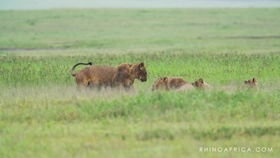
Leo the Lion King of the Jungle: A Comprehensive Overview
Leo, the lion king of the jungle, is not just a character from a famous animated film; he is a symbol of strength, courage, and leadership. This majestic creature has fascinated humans for centuries, and in this article, we will delve into the various aspects of Leo’s life, from his habitat to his role in the ecosystem.
Physical Characteristics

Lions are the largest of all the big cats, weighing between 265 to 420 pounds (120 to 190 kg) for males and 165 to 265 pounds (75 to 120 kg) for females. Their bodies are muscular and well-suited for their hunting lifestyle. Males have a distinctive mane, which can range from a light tan to a dark brown, and is thought to play a role in attracting mates and intimidating rivals.
Habitat

Lions are native to Africa and Asia, with their primary habitat being the savannas, grasslands, and open woodlands. They require a large territory to support their population, which can range from 10 to 100 square miles (25 to 250 square km) depending on the availability of food and water. The Serengeti Plains in Tanzania and Kenya, the Masai Mara in Kenya, and the Kruger National Park in South Africa are some of the most famous lion habitats.
Diet

Lions are carnivorous and primarily hunt antelopes, zebras, wildebeest, and other herbivores. They are known for their social hunting behavior, where a pride of lions works together to bring down large prey. Lions can go without food for several days, but they prefer to eat as much as possible when they catch a big meal, storing fat in their bodies for lean times.
| Prey Species | Percentage of Diet |
|---|---|
| Antelopes | 60-70% |
| Zebras | 10-20% |
| Wildebeest | 5-10% |
| Other Herbivores | 5-10% |
Social Structure
Lions are social animals and live in groups called prides. A pride typically consists of related females, their cubs, and a few adult males. The females are responsible for most of the hunting, while the males protect the pride from external threats. Male lions often leave their birth pride and compete with other males to take over a new pride.
Reproduction
Lions have a gestation period of about 110 days, and a female lion can give birth to up to four cubs at a time. The cubs are born blind and helpless, but they grow quickly and begin to eat solid food at around three months of age. They are fully grown and capable of hunting by the time they are two years old.
Threats and Conservation
Lions are facing numerous threats, including habitat loss, human-wildlife conflict, and poaching. The African lion population has decreased by more than 43% over the past two decades, and they are now classified as vulnerable on the IUCN Red List of Threatened Species. Conservation efforts are underway to protect lion habitats and reduce human-lion conflict, but much work remains to be done.
Cultural Significance
Lions have been revered and feared by humans throughout history. In many African cultures, lions are considered to be sacred animals and are often associated with strength and bravery. The lion is also a symbol of royalty, as seen in the title “King of the Jungle.” In the animated film “The Lion King,” Leo’s character embodies these cultural associations, making him an iconic figure in popular culture.
In conclusion, Leo the lion king of the jungle is a fascinating and complex creature that plays a vital role in the African ecosystem. From his physical characteristics and social structure to his cultural significance, there is much to learn about this majestic animal. As we continue to learn more about lions, we must also work to protect them and their






